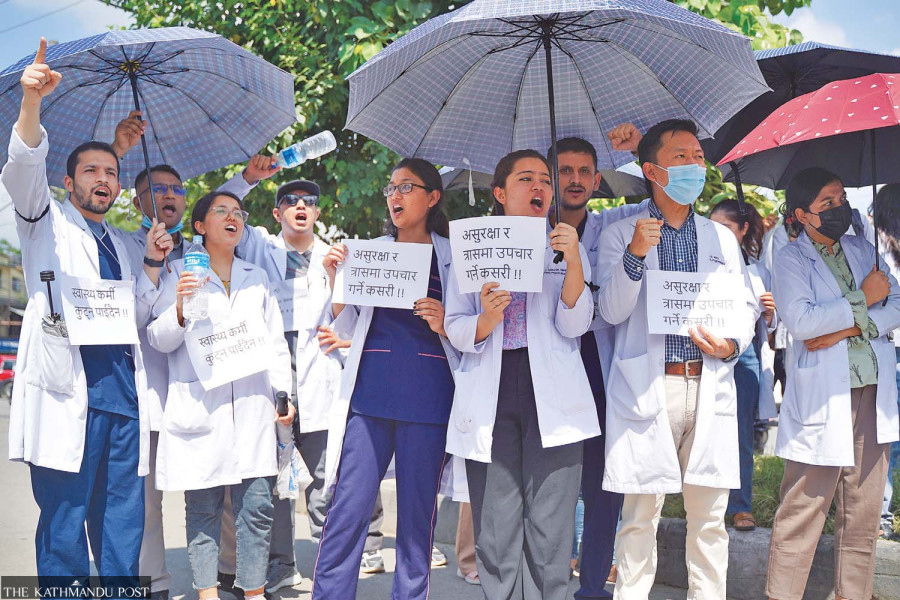Editorial
Strained ties
The breakdown of the doctor-patient bond of trust could have devastating consequences.
This autumn feels like a season of doctor-bashing already, given how many of them have been beaten while on duty. A cursory look at the news of the past couple of weeks unravels a tragic series of physical attacks on healthcare professionals, often by the patient’s families. Reports of such attacks have come from several healthcare institutions—Manipal Hospital in Pokhara, Sancho Hospital in Hetauda, District Hospital in Lamjung—the list goes on. While treatment without prejudice is the patient's right, the freedom to treat the patient without the fear of backlash is the doctor's right. The patients or their families seem to lack the fundamental understanding that a patient’s life or death is not solely dependent on the expertise or diligence of the doctor but also on the availability of the resources and the degree of the patient’s illness.
Sadly, it is not only the patient party that bullies the doctors. In a recent video, a police inspector claimed he had beaten doctors black and blue. Police personnel have been at par with the patient party in attacking the doctors. From beating doctors walking on the road while returning from duty during Covid-19 to thrashing them for walking past the cavalcade of the country's President, police personnel have time and again been insensitive towards the frontline healthcare providers. Apart from such extreme examples, what is missing in Nepal is the establishment of the basic fact that a respectful doctor-patient relationship is an inalienable part of care.
There is no overstating that beating doctors for the patient’s failure is no cure, just as teaching teachers for students’ failure or beating bankers for financial crisis make little sense. There certainly are negligence cases on the part of doctors, as was evident in the death of a five-year-old female child, Rejisha Gopali, at Kanti Children’s Hospital earlier this month. Apart from personal incompetence and negligence of doctors, there often are cases of insensitivity from hospital administration. These anomalies, though, are to be dealt with legally through institutions set up to oversee complaints against healthcare professionals. True, the work of the oversight institutions is not satisfactory—one reason why patient parties resort to violence—but the only sensible way out is to make these institutions work better.
The first step to recalibrating the doctor-patient relationship is minimising the effects of the corporatisation of healthcare. As hospitals focus on making money by exploiting the patients' vulnerability, the bond between the doctors and the patients often breaks. The unavailability of sufficient doctors in public hospitals is another story of the gap in the doctor-patient relationship. There is no alternative to filling this gap through stringent security and legal measures, and a massive awareness campaign among the public about the ethical and legal complications that arise from attacks on healthcare professionals. Not the least because the continuation of such attacks could invite a grave healthcare crisis.




 20.12°C Kathmandu
20.12°C Kathmandu














